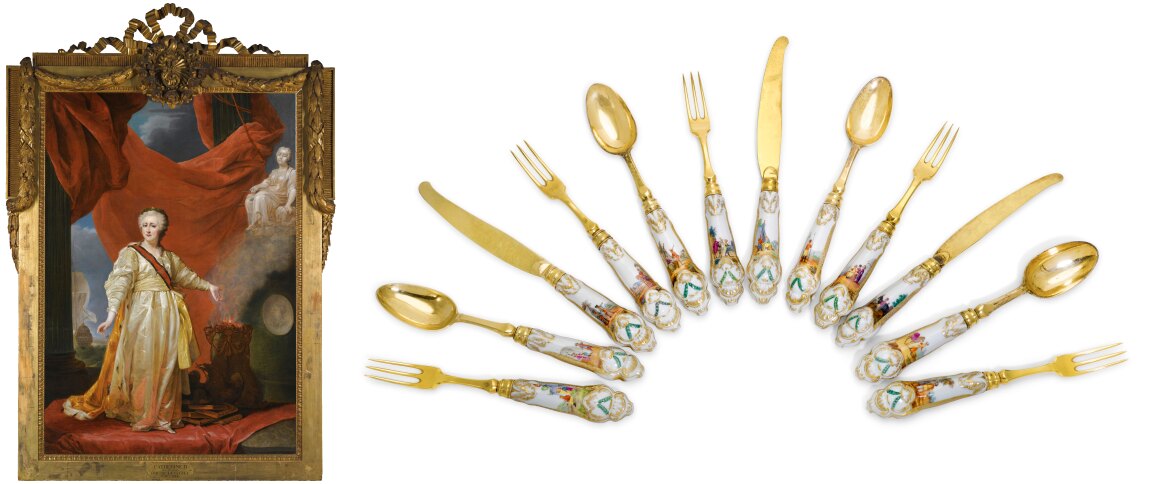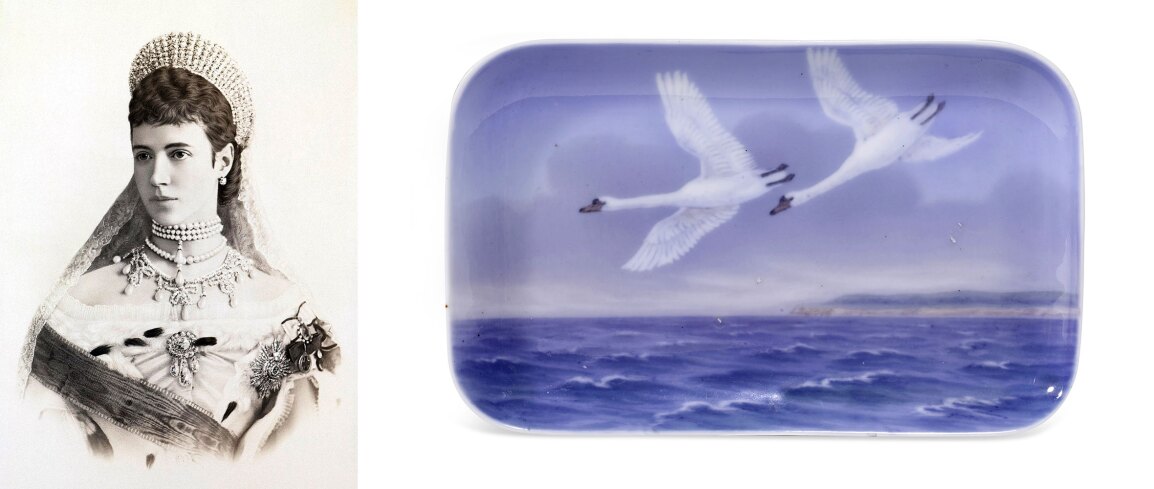S otheby's sale of Porcelain of Royal and Noble Distinction includes a number of beautiful objects with connections to the Romanovs. Coming to power in 1613, successive Romanov Tsars ruled Russia for more than 300 years until the abdication and assassination of the last, Nicholas II, during the events of the Russian Revolution. Here, discover five exquisite pieces from the sale below, each with a connection to members of the Imperial family.
Catherine the Great (1762-1796)

A German Princess by birth, Catherine II came to the throne of Russian following a coup d'état that overthrew the previous Tsar, her husband Peter III. It was during her reign that Russia established itself as one of Europe's great powers. This set of flatware formed part of a service gifted by Frederick the Great of Prussia to Catherine during her first war with the Ottoman Empire. Celebrating Russia’s victories in its expansion south and east, the service was an important diplomatic gift, ensuring a strong relationship between the two European powers.
Alexander I (1801-1825)
The grandson of Catherine the Great, Alexander I ascended the throne following the assassination of his father Paul I in 1801. He is perhaps best known as the Tsar who ruled during Russia's victory in the Napoleonic Wars. This beautiful cup, decorated with a porcelain profile of the Emperor, reflects the early 19th-century fashion for silhouettes.
Alexander III (1881-1894)
This banquet service was commissioned for Alexander III when he was still Tsarevich (heir apparent), on the occasion of his marriage to Princess Dagmar of Denmark (future Empress Maria Feodorovna). One of the smaller services, it was intended for use at exclusive private dinners hosted at the Farm Palace in Peterhof.
Nicholas II (1894-1917)
Nicholas II's reign at the turn of the 20th century marked the end of the Russian Empire. A grandson of Queen Victoria, he was killed by the Bolsheviks along with his wife and children in July 1918. This service was the last to be commissioned from the Imperial Porcelain Factory and was intended for the royal residence at Tsarskoye Selo. Reserved for ceremonial occasions, the service is designed to be elegant and modern, yet harmonising with the Baroque and Rococo splendour of the palace.
Empress Maria Feodorovna

In 1919, the Dowager Empress Maria Feodorovna fled Russia on a British warship with her daughter Grand Duchess Xenia Alexandrovna and 17 other members of the extended Romanov family. She presented this elegant tray, inscribed on the reverse with her own hand, to her daughter shortly before her death in 1928 in her native Denmark. The tray remained in the possession of their direct descendants for almost a century.




